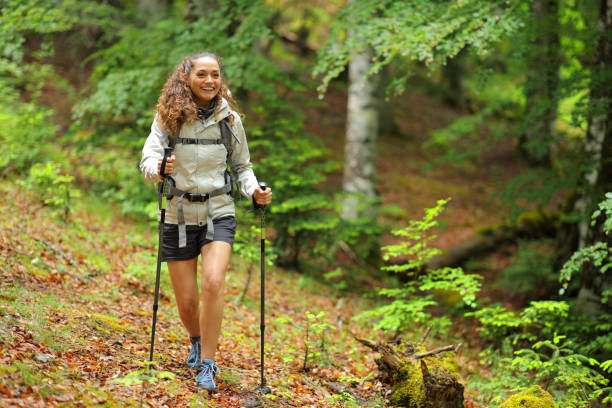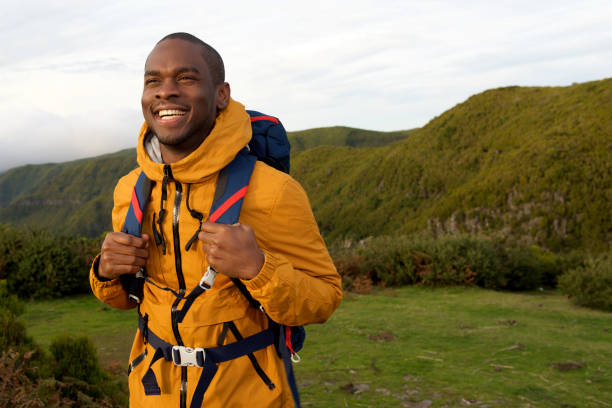What To Wear Hiking: 10 Basic Hiking Outfits
The basic outfits in your hiking gear should be as comfortable as they can get. They shouldn’t be the barriers between you and the experience you’re about to create. That is why we’ve gathered some of the basic hiking outfits that can keep you feeling comfortable and elevate your experiences. Not only did we make this comprehensive list, we also highlighted the major factors that affect your hiking clothing selections.
Table of Contents
Factors to Consider When Choosing What to Wear Hiking

Regarding basic hiking clothes, there isn’t a one-size-fits-all approach because what feels like the basics for me may not be the basics for you. However, there are generalized staples that you can wear when you’re headed out for a hike in summer, fall, winter, or spring.
The main factors to consider when selecting what to wear hiking are the season’s considerations, the temperature of the day, the hiking distance, the duration of the hike, and the path or trails you would be exploring. These variables can influence the hiking attires you need for the moment.
During the colder seasons, you would need more layers for extra warmth and comfort. While the hotter seasons call for loose and breathable apparel. Beyond just looking great and stylish, you need to check in with the weather forecast to adapt your hiking outfits to the season’s elements.
Your hike distance and the time frame you mapped out for the hike need to be considered because aside from the seasonal factors, you can’t wear some clothes for very long distances and in certain destinations, so you don’t tire out before the end of your hike.
Basic Hiking Outfits
To put together the ideal basic hiking outfits, you should embrace layers and anticipate changing weather conditions where necessary, especially in fall when the weather can be so uncertain. For your many different hiking explorations, here are the basic hiking outfit ideas that should come to mind.
1. Hiking Shorts
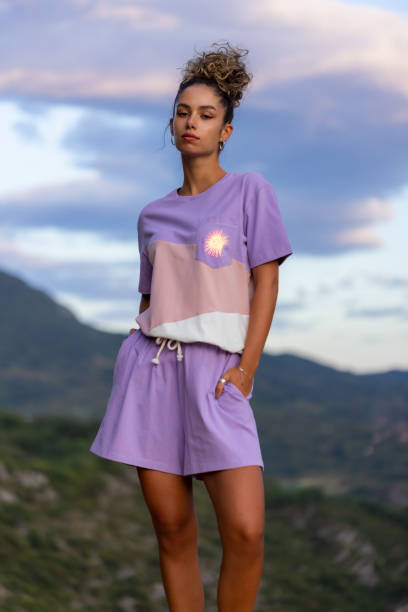
After you have worked out which outfit(s) will be your base layer, you should select your bottoms accurately. Shorts are more comfortable to wear in summer and on short-distance hikes while longer pants are best preferred for mountain hikes in winter or in autumn. You can wear your shorts with a T-shirt, a vest, or a jacket.
2. Hiking Pants
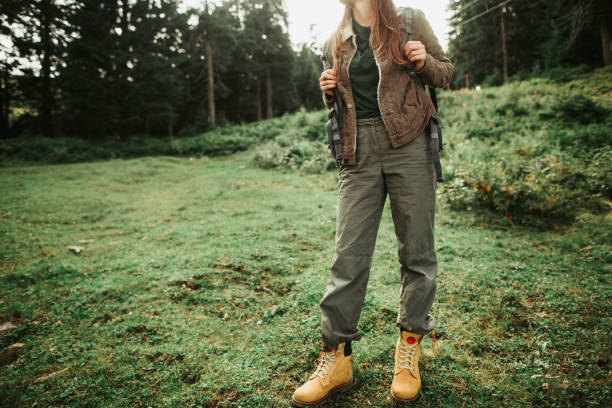
Comfortable and sturdy hiking pants can offer some layer of protection to your outfit. They can serve as a cozy layer for when it’s cold in the woods, a protective layer from pests like ticks or mosquitoes, or a stylish addition to your hiking wardrobe. It would be ideal to opt for some flexible and moisture-wicking hiking pants.
3. Hiking Footwear

Your hiking shoes should be sturdy, supportive, and protective. It should be solid just in case you step on rocks and stubs and should be able to retain its warmth even if you step on wet surfaces. You can opt for sneakers, heavy-duty boots, sandals, leather hiking boots, flip-flops, or slip-on depending on the location you’re headed for.
4. Rain Jacket
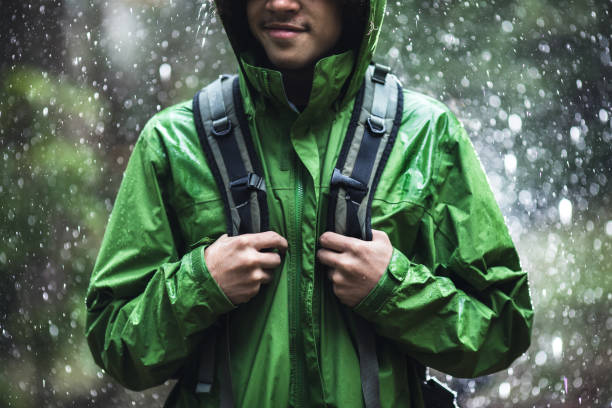
The rain jacket is more of an outer shell, but that doesn’t wear you should wear just it. Before wearing your rain jacket, ensure you have a moisture-wicking base layer like a tank top or graphic tee. Then a mid layer would serve as the insulating layer and can be a light sweater or a cardigan. You can always add or remove any extra layer that may not feel functional in your outfit before finishing off with the waterproof raincoat.
5. Wicking Shirt
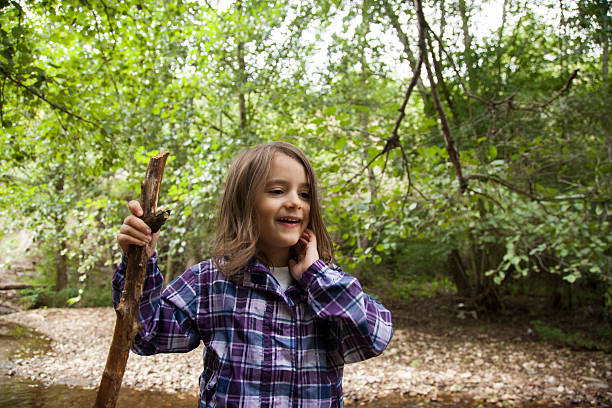
A moisture-wicking shirt with plaid, geometric, and structured patterns is perfect for layering over your base layers. They offer some level of warmth and also serve as a breathable stylish layer over your base outfit.
6. Rain Pants

When choosing your hiking clothes, their functionality should be your first concern before how fashionable they may look. When it’s raining or snowing, rain pants would be functional as they keep you comfortable, cozy, and safe from all the water. Some of these pants have a warm fabric construction on their wrong side, giving them dual functionality – One protecting you from the rain and the other keeping you warm in your hiking cloth.
7. Fleece Jacket

After you’ve worked out your base layer, you can then top it off with a fleece jacket. Your base layer may be your underwear, sports bras, a t-shirt, or even a long-sleeve top. Polyester, merino wool, and nylon base layers are the best because they dry out fast and easily wick out the moisture and sweat off your skin. You can either wear the jacket alone or it may be the mid of final layer in your hiking outfits.
8. Hat
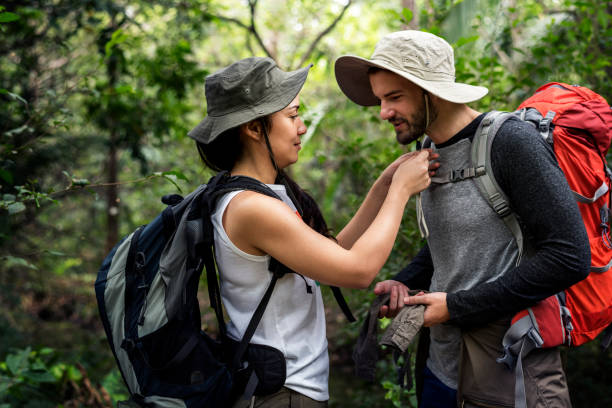
We know you can’t wait to hit the trails, but you certainly don’t want to start the experience on the wrong foot. On your checklist of the basic hiking cloth requirements, these should be a hat to protect you from the sun and elements. This may be a sun hat, a bucket hat, a straw hat, a beanie, or a baseball cap. You can also have other protective and stylish accessories like sunglasses. Sunscreen should definitely but in your backpack as well.
9. Wool Socks
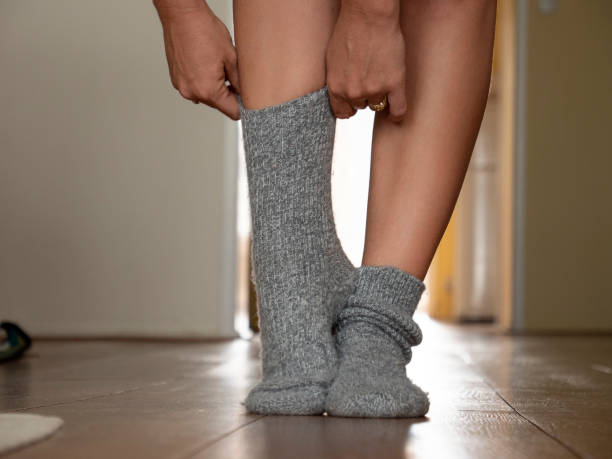
Socks serve different functions throughout your hike. They offer some warmth in the cold weather, protection in forested areas and when you’re walking around tall grasses and some shield from the bugs and ticks. They also offer some versatility and style to your look.
10. Neck Gaiter
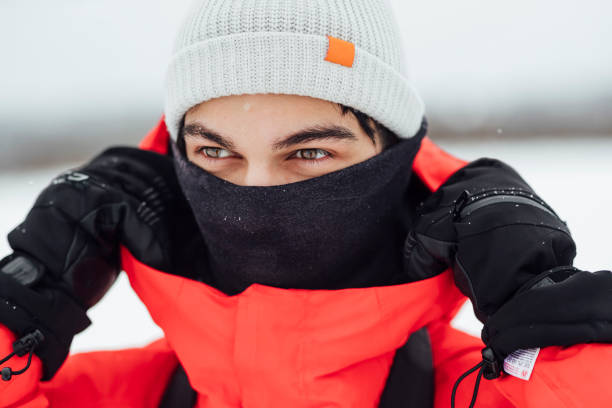
If after you’ve checked the forecast and it’s going to be rainy, opt for a neck gaiter. They are comfortable to wear and ensure you don’t catch a cold from your hike. Some neck gaiters repel water and you should really consider that when it’s snowing or raining.
11. Bonus: Hiking Backpack
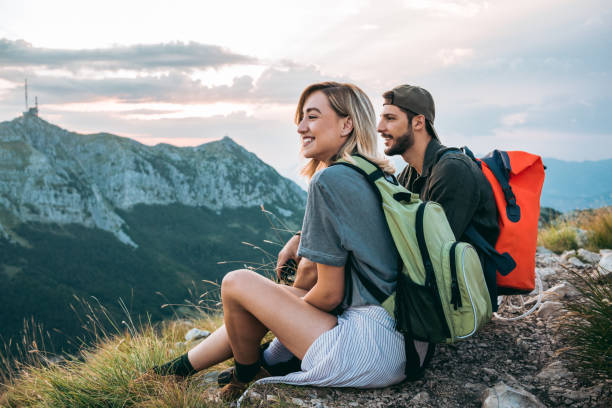
A bonus point on our list is a hiking backpack. Aside from the hiking clothes you put on, you need to carry a backpack along during your hike. It would help you take up some essentials and also pack on some layers if you’re not sure about the weather.
Conclusion
During your hiking experience, you certainly want to choose non-restrictive clothes that are also comfortable and adapted to the weather. Remember, comfort first before fashion or style. This will ensure you go through the hike without tiring out or giving up before the end of the hike. There may be poisonous bugs or plants on your trail, so you need to choose clothes that protect you from these.

